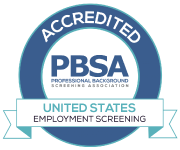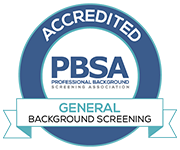See What's Trending In The Trucking and Commercial Transportation Industry
Vehicle Impoundment: How Continuous Driver Screening Protects Commercial Fleets
 Commercial operators with suspended licenses can sideline trucks and drain profits. Automated driver screening helps fleet managers strengthen compliance and reduce risk - keeping high-risk drivers off the road - and business moving forward.
Commercial operators with suspended licenses can sideline trucks and drain profits. Automated driver screening helps fleet managers strengthen compliance and reduce risk - keeping high-risk drivers off the road - and business moving forward.
When Ontario’s Ministry of Transportation (MTO) recently suspended hundreds of commercial truck drivers’ Class A/Z licences after uncovering irregularities in training and testing practices, it highlighted a critical question for fleet operations managers everywhere:
What happens when non-compliant operators slip through poor driver screening practices?
The reality is stark: even a single suspended or improperly licensed driver can take a truck off the road — along with its cargo, revenue, and your company reputation. Fleets bear the full burden of vehicle impoundment fees, towing, storage, and operational downtime, while also risking higher premiums and even jeopardizing insurance eligibility if poor vetting practices show up in their claims history.
That’s why forward-thinking fleet managers are adopting automated driver screening tools like ISB’s Red Flag Alerts, explains Kevin Carroll, Vice President, Insurance & Transportation Solutions at ISB Global Services.
With Red Flag Alerts, fleet managers automate ministry-sourced driver abstract checks and easily highlight red flags on suspensions, missing endorsements, licence class issues and convictions – so they can take action before a compliance lapse becomes an operational and financial setback.
“Beyond saving time and money, Red Flag Alerts delivers the kind of insight fleet managers need to reduce risk and improve safety,” Carroll adds. “In today’s complex commercial auto risk environment, keeping ineligible drivers off the road isn’t just good practice. It’s essential to protecting your business.”
 The True Cost of Poor Driver Screening
The True Cost of Poor Driver Screening
For fleet managers, suspended licences aren’t just a regulatory issue, they’re an operational and financial liability. Vehicle impoundments as a result, can disrupt business, shrink margins, and damage customer relationships.
According to Transport Canada, commercial vehicle collisions account for nearly 20% of road fatalities, with ineligible or underqualified drivers linked to higher accident rates. This underscores the importance of tighter driver compliance screening and oversight.
“When a driver is caught operating on a suspended licence, the consequences are immediate,” says Carroll. “In Ontario for example, police can impound a vehicle for anywhere from seven to 90 days depending on the severity of the violation. That’s your driver and your truck parked, costing your business time, money, and headaches.”
The financial impact of impoundment is steep. Fleets shoulder the full cost of towing, daily storage fees, and administrative charges, which can quickly climb into the thousands.
For heavy-duty vehicles, costs climb quickly, with towing, storage, and admin fees often running into thousands. And if a driver has been suspended for over 100 days, not just the tractor but the trailer and cargo can be impounded too, multiplying the disruption and costs.
“Add to this the additional indirect losses: delayed shipments, idle drivers, disappointed customers and lost contracts,” Carroll adds.
“Despite these risks, many fleets still rely on outdated processes to screen their drivers,” Carroll says. Too often, managers accept driver-submitted abstracts that can be easily altered, or they depend on manual reviews that are slow, costly, and prone to error.
In many cases, screening is only done at hiring or once a year at policy renewal, leaving a wide blind spot in compliance. “The reality is that suspensions, convictions, licence class downgrades, new restrictions or expired endorsements can happen any time during the year. So, it becomes critical to automate driver screening, and to screen every quarter to keep ineligible drivers out of the system,” Carroll says.
 How Continuous Driver Screening Supports Compliance and Risk Management
How Continuous Driver Screening Supports Compliance and Risk Management
Today’s fleet managers can’t afford blind spots in driver compliance. You need a complete, up-to-date and thorough view of who’s eligible to drive and who isn’t.
ISB’s Red Flag Alerts provides that visibility. The secure, web-based platform centralizes the ordering, collection, and analysis of driver abstract data, then automatically compares it against your company’s compliance thresholds. The result is a clear pass/alert scorecard that instantly flags issues with violations, licence classes, restrictions, or missing endorsements before they turn into costly problems. With Red Flag Alerts, fleets can:
- Identify ineligible drivers early with scheduled monitoring, intuitive dashboards, and instant alerts.
- Increase safety and prevent losses by removing ineligible drivers before they trigger vehicle impoundment, downtime, lost revenue or claims.
- Boost automation and efficiency by eliminating repetitive manual tasks, freeing up staff time, and streamlining workflows.
- Strengthen compliance proof with time-stamped, audit-ready records that demonstrate due diligence to insurers and regulators.
- Prevent fraud with tamper-proof, ministry-sourced reports.
- Scale oversight with ease whether you manage 50 drivers or 5,000, automation ensures consistent, unbiased monitoring across your fleet.
Red Flag Alerts in Action
“From regional carriers to national fleets, Red Flag Alerts is already delivering measurable results, cutting costs, saving time, and bolstering compliance,” says Carroll.
For example, one transportation company with 250 drivers used ISB’s Red Flag Alerts to overhaul its compliance process, saving $10,000 annually and over 160 hours in labour.
Similarly, a national transportation company with 5,000 drivers turned to Red Flag Alerts to streamline its driver compliance review process, slashing its administrative burden and gaining the scale to monitor thousands of drivers continuously. The automation not only resulted in annual savings totalling nearly $200,000, but also saved them over 3,000 hours in labour.
With the ability to sort infractions by non-compliance severity, these fleets could focus directly on its high-risk drivers, enabling them to improve road safety, reduce liability, and reinforce their proactive approach to risk management.
“It’s not just about improving efficiency and compliance, it’s about giving fleet managers the confidence that only safe drivers operate the fleets they’re tasked to manage,” Carroll says.
 Why Smarter Driver Screening Matters
Why Smarter Driver Screening Matters
For fleet managers, that means more than preventing downtime. It means protecting customer trust, safeguarding revenue, and building a stronger safety culture that insurers respect and reward.
By embracing real-time, automated driver screening, fleets don’t just react to compliance failures, they proactively prevent them, and in doing so, secure a competitive advantage in an increasingly high-stakes industry.
“Ultimately, it comes down to protecting your business and brand,” Carroll says. “With continuous screening, you’re not leaving compliance to chance.”
Why Leading Fleets Trust ISB
At ISB Global Services, we help fleets stay compliant, efficient, and protected with innovative solutions like Red Flag Alerts. By combining ministry-sourced data with automated monitoring, we give fleet managers the clarity and confidence to act before risk becomes reality. From reducing downtime and avoiding costly impoundments to improving safety and strengthening insurer relationships, ISB empowers transportation companies to operate smarter and safer. With ISB as your partner, you’re not just screening drivers—you’re safeguarding your business, your reputation, and the road ahead.







While we are not affiliated with or employed by these organizations, we may reference our verified status in marketing materials, proposals, and client communications to demonstrate ISB’s commitment to compliance and security.